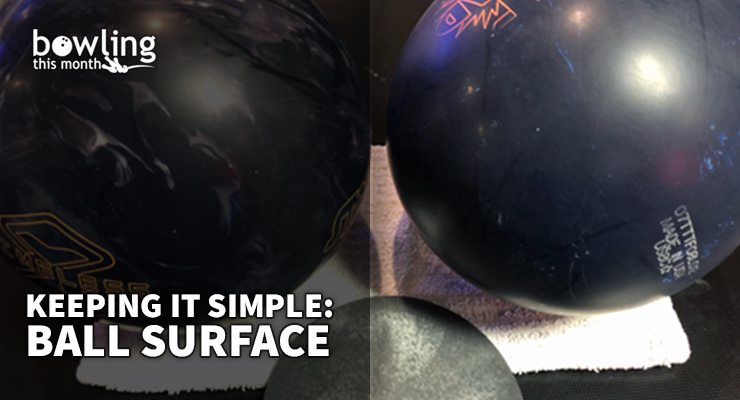Article Contents
- 1. Bowling ball design
- 2. The first step of proper ball maintenance
- 3. The importance of ongoing maintenance
- 3.1. The league play example
- 4. Adjusting surface
- 5. An important practice tip
- 6. Final thoughts
Note: This article is only available to Bowling This Month subscribers.
Today, we are going to cover (pun intended) the surface of the bowling ball. Coverstock design, preparation, and management are the three areas we will be exploring, with a focus on maintaining the life and reaction of the bowling ball. Managing and maintaining the surface of the ball are by far the most important things to understand and utilize, but these things are often the most overlooked.
To start, let’s talk a little bit about the design process.
Bowling ball design
Bowling ball design and creation generally takes anywhere from six to 12 months, and occasionally longer, from the initial inception to the day it arrives on the wall in your local pro shop. It starts when a manufacturer gets their marketing and design teams together and discuss a concept for something new or a continuation of an existing line. In these meetings, they will discuss a variety of things: colors, logos, performance, coverstock, core, promotions, etc. Once a concept is agreed upon, they will pour color samples and test balls, often by hand.
Next, they will pour a small run of bowling balls from the manufacturing facility with different formulations and begin testing performance. They will compare against their own balls and competitors’ equipment. The most important thing that happens in this process is narrowing down the sweet spot of the box finish for the desired target audience. Will it have polish, compound, 2000 grit sand? With basically an unlimited amount of options, this process can be quite tedious, but it’s very important to get it right. Why is this so important? Because that decision will impact most of the balls’ performance for thousands of consumers. (Yes, the surface can and often should be adjusted by the consumer, but we’ll get to that later.) Once these tests—which can often take ...
Already a premium member? Click here to log in.


